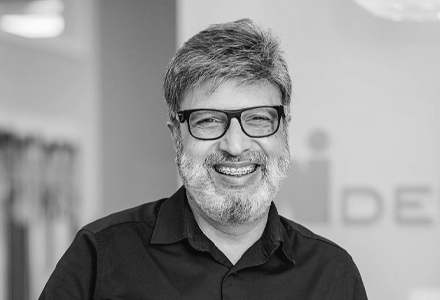Before you book that flight for a “smile vacation,” hear what really happened to individuals who returned with more than just a tan and why your local dentist may be your best investment.
At first glance, it sounds like the deal of a lifetime, fly to a beautiful country, get a brand new smile for a fraction of the cost and maybe even throw in a beach day or two.
But when it comes to dental tourism, what you save in dollars, you may end up paying for in pain, regret, or emergency repairs.
As a practicing dentist in Canada, I have seen my fair share of patients who have come home from overseas procedures with complications, some minor, some serious and others just dangerous.
Below are a few real patient stories from MI Dental that highlight the risks involved. (Names have been changed for privacy, and all stories are shared with patient consent.)
“I Have the Toolkit in My Truck” When Implants Were Placed and Loaded in Days
Mark went to Turkey for six dental implants in the upper front teeth, the esthetic zone. The price? a fraction of what it would cost here. But when he came back to Canada, things unraveled quickly.
Just two months after surgery, the implants began coming loose.
When he came to see me, I explained the standard process: dental implants are typically done in two stages. First, the implant (which functions like the root) is placed and left to integrate with the bone over 4–6 months. Only after successful integration do we place the crown (the visible “tooth”).
In Mark’s case, the implants were placed and loaded within days, skipping the healing phase entirely.
I informed him the implants would need to be removed, bone grafting done to repair the damage and new implants placed with the appropriate healing time.
But then it did get interesting, a few weeks later, Mark returned:
“The clinic in Turkey says it’s no problem, they are sending a toolkit so you can just tighten them.”
He paused, “It’s in my truck. Want me to bring it in?”
Sometimes all you can do is smile… and say no.
“I Landed with Blood Pouring from My Nose” A Case of Sinus Perforation
Another patient (let’s call him Ali) came in unannounced holding a white towel over his mouth and nose. The towel was soaked in blood.
Just days earlier, he had received six upper implants, again in Turkey. Everything seemed fine until his return flight. During descent, he felt intense pressure in his face, followed by nosebleeds.
X-rays revealed that three of the implants had perforated into his Maxillary Sinus, a sensitive air-filled space above the upper teeth. The pressurization changes on the flight triggered the sinus bleeding.
He was sent to the ER immediately. The implants were removed on an emergency basis and the sinus perforations had to be surgically patched, a serious medical and financial burden.
This was not just bad dentistry. It was an anatomical oversight that endangered his health.
“13 Root Canals in 6 Hours” The Smile That Didn’t Work
The third story is perhaps the most heartbreaking.
A patient (let’s call her Sara) arrived with a full mouth of porcelain bridges, upper and lower. Every natural tooth had been crowned. The problem? She was in constant pain, could not chew and had lost weight because she could no longer eat properly.
She had undergone 13 root canals in a single day, all in under six hours, during a “smile makeover” trip to, you guessed it, Turkey.
Let that sink in.
At our office, we schedule 90 minutes per root canal, followed by a separate appointment for the restoration because this is delicate, high precision oriented work. One needs time, focus and follow up to ensure long-term success.
Sara didn’t get any of that. The result: chronic pain and a mouthful of poorly fitted, high risk work.
We had to recommend a full mouth rehabilitation, removing every crown and bridge, reassessing each tooth, and rebuilding her bite from the ground up.
What These Stories Reveal
These are not isolated incidents. They are becoming increasingly common as individuals seek cheaper alternatives abroad. The underlying issue is not the location, it is the compromised protocols, lack of follow-up and rushed treatment timelines.
In many cases, foreign clinics simply don’t have the time (or incentive) to deliver long-term outcomes. You are in and out in a few days and if something goes wrong? You are 9,000 km away.
Is Dental Tourism Always Bad?
Not necessarily. Some international clinics do excellent work, especially for patients with the time and resources to vet providers, stay longer for follow-ups and coordinate aftercare.
But these are the exceptions, not the rule.
To improve your odds, you would need to:
- Research credentials (not just a convincing website)
- Ensure the provider, not just the clinic is qualified
- Understand timelines for proper healing
- Be prepared for unexpected outcomes
What We Do Differently at MI Dental
At MI Dental, we offer:
- Transparent fee structure
- Phased treatment plans to fit your budget and schedule
- High quality materials and going above an beyond Public Health specifies sterilization protocols
- Carefully staged procedures based on biology not urgency
- Local follow-up care and long-term relationships
A lasting, comfortable, beautiful smile is not something we rush. It is something we craft with your collaboration.
You Cannot Fix a Smile with a Toolkit
Dental tourism may look good on Instagram or in a travel brochure but behind the scenes, it is a risky endeavor at best. You only get one jaw, one bite, one smile. Rebuilding it after a rushed job abroad almost always costs more than doing it right the first time.
If you are considering dental work, here or elsewhere, get in touch with a qualified professional. Ask questions, demand proper timelines and remember: what looks like a shortcut today can become a detour tomorrow.

